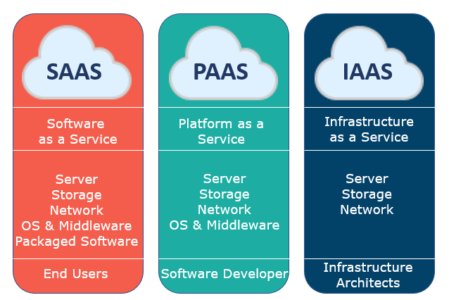Why Select LinkDaddy Cloud Services: Advantages and Features Discussed
Why Select LinkDaddy Cloud Services: Advantages and Features Discussed
Blog Article
Achieve Seamless Scalability With Cloud Services
In the ever-evolving landscape of cloud services, attaining smooth scalability stands as a keystone for modern-day companies seeking to remain affordable and versatile. The mission for smooth scalability with cloud services introduces a globe of possibilities for those prepared to accept the transformative power of vibrant resource administration.
Advantages of Cloud Scalability
Cloud scalability uses companies the flexibility to dynamically adjust resources based on need, ensuring optimal performance and price effectiveness. One essential benefit is the ability to range sources up or down promptly in feedback to fluctuating work. This agility makes it possible for businesses to satisfy transforming consumer demands without over-provisioning sources, inevitably causing set you back financial savings. Scalability additionally boosts efficiency by making certain that systems can handle boosted traffic or workload without experiencing downtime or slowdowns. By efficiently alloting sources, companies can keep high degrees of efficiency throughout peak times without unneeded expenditures throughout quieter periods. Additionally, cloud scalability promotes innovation and experimentation by permitting companies to easily test originalities and range them as needed. This flexibility motivates a society of continuous enhancement and adaptation, making it possible for organizations to stay competitive in a swiftly progressing market landscape. Inevitably, the benefits of cloud scalability expand beyond cost savings to encompass enhanced efficiency, dexterity, and technology.
Trick Functions for Scaling
Reliable scaling in cloud solutions depends on vital features that make it possible for companies to readjust sources dynamically based on demand. One essential function for scaling is flexibility, allowing resources to scale up or down in reaction to changing workloads. This makes certain that organizations can fulfill efficiency requirements without over-provisioning resources. One more vital feature is scalability, making it possible for systems to handle enhanced workload by adding resources flawlessly. This function is important for suiting development without compromising efficiency. Additionally, automation plays an important function in scaling by automating the provisioning and de-provisioning of sources based on predefined policies. Automation lowers human treatment, improves performance, and makes sure rapid action to altering demands. Surveillance and analytics tools are additionally necessary for scaling, providing insights right into source use, efficiency metrics, and possible bottlenecks. These devices enable companies to optimize and make educated decisions resource allocation for reliable scaling. Overall, these crucial attributes jointly empower companies to achieve seamless scalability in cloud solutions.
Implementing Auto-Scaling Strategies
To efficiently enhance resource appropriation and adjust to varying work, organizations should tactically carry out auto-scaling techniques in their cloud solutions facilities. Auto-scaling permits systems to instantly change the number of compute sources based upon real-time demand. There are different auto-scaling approaches that organizations can use, such as anticipating scaling, which utilizes historic information to anticipate future resource requirements, and reactive scaling, which replies to current workload changes.

Ideal Practices for Scalability
For organizations aiming to enhance their scalability in cloud services, executing best techniques is critical for optimal efficiency and source management. One secret ideal technique is creating applications with a microservices my review here design. This strategy breaks down applications right into smaller sized, independent services that can be released, upgraded, and scaled independently, enabling for higher flexibility and scalability.
An additional essential practice is making use of containerization modern technology, such as Docker or Kubernetes. Containers allow the packaging of applications and their dependencies into separated systems, making it easier to scale elements independently and deploy them constantly across different atmospheres.
Additionally, implementing automated deployment and facilities as code (IaC) can enhance scalability efforts (linkdaddy cloud services). Automation devices like Terraform or Ansible help in provisioning and taking care of sources successfully, lowering hand-operated errors and allowing quick scalability
Moreover, checking efficiency metrics, establishing signals, and carrying out normal capability preparation are vital practices to make sure proactive scalability management. By adhering to these finest techniques, companies can accomplish seamless scalability in their cloud services while optimizing performance and source application.
Monitoring Performance Metrics
When examining the effectiveness of cloud solutions scalability, carefully keeping track of performance metrics is necessary for ensuring optimum functionality and resource appropriation. By continually tracking vital efficiency indications (KPIs) such as action times, latency, resource, and throughput utilization, organizations can get valuable insights right into the health and wellness and effectiveness of their cloud infrastructure. Monitoring performance metrics enables the early detection of potential bottlenecks or issues that might impact scalability, enabling positive steps to be taken to address them before they rise.

Verdict
To conclude, achieving seamless scalability with cloud services is essential for companies to maximize efficiency, boost development, and keep high performance levels throughout peak times. By leveraging the advantages of cloud scalability, implementing auto-scaling methods, utilizing key attributes such as elasticity Visit Website and automation, and complying with best practices like application design and efficiency tracking, companies can effectively scale their systems while making best use of source use and efficiency.
The quest for seamless scalability with cloud services unveils a world of opportunities for those willing to welcome the transformative power of dynamic resource administration.
Cloud scalability offers organizations the adaptability to dynamically change resources based on demand, making sure optimum efficiency and expense efficiency. One more crucial function is scalability, allowing systems to deal with boosted workload by including sources seamlessly.For organizations aiming to boost their scalability in cloud solutions, executing ideal methods is important for optimum performance and resource administration.When assessing the performance of cloud solutions scalability, very closely checking performance metrics is vital for making sure optimal functionality and source appropriation.
Report this page